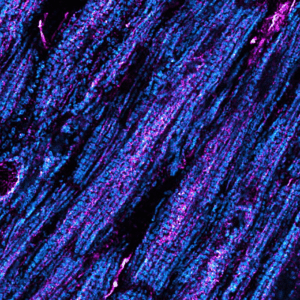02.12.2025
Authors Annamalai K, Dilliker S, Buchholz E, Castro-Hernández R, Panyam N, Pommeranz A, Wiederhake P, Wery von Limont N, Hempel N, Ebner V, Swarnkar S, Mohamed BA, Streckfuss-Bömeke K, Steffens S, Herzig S, Ebert A, Fischer A, Toischer K Journal Cell Communication and Signaling Citation Cell Commun Signal. 2025 Dec
26.11.2025
Nuclear Alpha-Synuclein: Mechanisms and Implications for Synucleinopathies
Authors Outeiro TF, Koss DJ Journal Movement Disorders Citation Mov Disord. 2025 Nov 26. Abstract Alpha-synuclein (aSyn), historically studied for its synaptic functions and central role in Lewy body pathology, is emerging as a protein with significant nuclear activities relevant to Parkinson’s disease (PD) and related synucleinopathies. Recent advances reveal
24.11.2025
Continuous dynamics of cooperation and competition in social decision-making
Authors Lewen D, Ivanov V, Dehning J, Ruß J, Fischer A, Penke L, Schacht A, Gail A, Priesemann V, Kagan I Journal Communications Psychology Citation Commun Psychol. 2025 Nov 24;3(1):170. Abstract Real-life social interactions often unfold continuously and involve dynamic cooperation and competition, yet most studies rely on discrete games
24.11.2025
CRC 1286 enters third funding period
The German Research Foundation (DFG) is funding the Collaborative Research Centre (CRC) 1286 ‘Quantitative Synaptology’ at the University Medical Center Göttingen (UMG) for a further 3.5 years from 1 January 2026. This is already the third round of funding for the research consortium, which was launched in 2017. The total
24.11.2025
The near-infrared bacteriophytochrome-derived fluorescent protein PENELOPE enables RESOLFT superresolution microscopy
Authors Stumpf D, Jensen N, Mittelheisser C, Keller-Findeisen J, Chizhik AI, Kamper M, Diekmann T, Habenstein F, Jansen I, Enderlein J, Sliwa M, Inamdar K, Hell SW, Jakobs S Journal Proceedings of the National Academy of Sciences of the United States of America Citation Proc Natl Acad Sci U S
20.11.2025
Synphilin-1 modulates alpha-synuclein assembly, release and uptake
Authors Lázaro DF, Amen T, Gerhardt E, Song C, Burns R, Kruse N, Santos PI, Milovanovic D, Höglinger G, Mollenhauer B, Luk KC, Lee VM, Outeiro TF Journal NPJ Parkinsons Disease Citation NPJ Parkinsons Dis. 2025 Nov 20;11(1):326. Abstract Alpha-synuclein (aSyn) is an intrinsically disordered protein involved in phase separation
17.11.2025
CochleaNet: deep learning-based image analysis for cochlear connectomics and gene therapy
Authors Roos L, Meric Diniz A, Koert E, Schilling M, Uhl M, Thirumalai A, Aakhte M, Kusch K, Huisken J, Moser T, Pape C Journal BioRxiv Citation bioRxiv 2025.11.16.688700. Abstract With the emergence of gene and optogenetic therapies targeting deafness, the comprehensive analysis of the molecular anatomy and physiology of
14.11.2025
Brain-derived synaptic vesicles have an intrinsic ability to sequester tubulin
Authors Mimoso T, Korobeinikov A, Stein A, Milovanovic D, Rizzoli SO, Köster S, Reshetniak S Journal BMC Biology Citation BMC Biol. 2025 Nov 14;23(1):340. Abstract Background: The presence and function of microtubules within the synaptic bouton has long been under investigation. In recent years, evidence has accumulated that connects the
13.11.2025
Isotropic, aberration-corrected light sheet microscopy for rapid high-resolution imaging of cleared tissue
Authors Aakhte M, Müller GF, Roos L, Li J, Göpel T, Weiss KR, Diniz AM, Wenzel J, Schwaninger M, Moser T, Huisken J Journal Nature Biotechnology Citation Nat Biotechnol. 2025 Nov 13. Abstract Light-sheet microscopy is ideal for imaging large and cleared tissues, but achieving a high isotropic resolution for
12.11.2025
Atrial fibrillation: disrupted calcium communication throws the heart out of rhythm
A joint study by Göttingen University Medical Center (UMG) and Würzburg University Hospital provides new insights into why heart muscle cells lose their rhythm in atrial fibrillation. Disrupted calcium communication between central cell structures in the heart could be a decisive mechanism in this process. The findings have been published




